The Visual Guide to
Bovine Reproduction
Postpartum Care: Uterine Involution
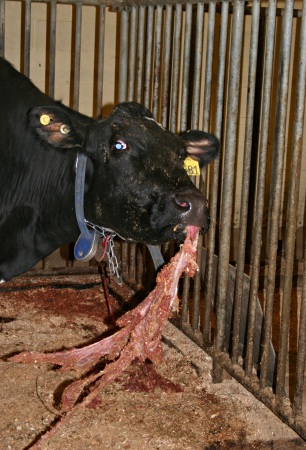
Cow Eating Placenta.
It is not uncommon for a cow to eat her fetal membranes. This may cause digestive problems. It is an old-wives tale that the fetal membranes contain hormones that will benefit uterine involution. Some believe that it is the instinct of the cow "remove the evidence" to discourage predators.
Smith MC (2006)
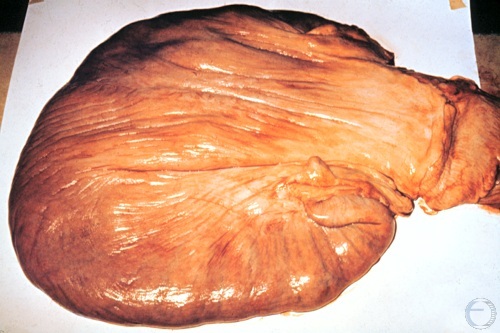
Postpartum Uterus - 12 Hours.
Uterus 12 hours after a spontaneous delivery. The fetal membranes were delivered by 8 hours post partum. Note the rugae of a well contracted uterus. The diameter of the cervix is 12.5 cm.
Morrow DA (1975)
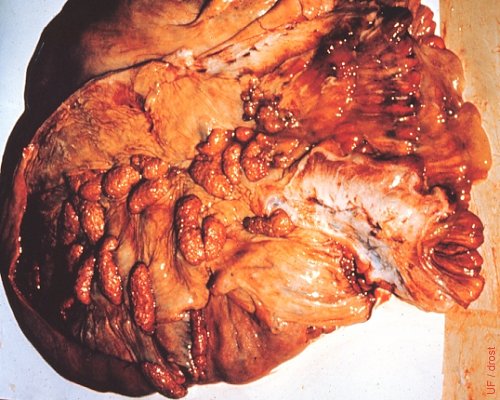
Postpartum Uterine Lumen - 12 Hours.
The fetal membranes detached by 12 hours post partum. The caruncles are denuded.
Morrow DA (1975)

Postpartum Uterus - 5 Days.
Involuting uterus at 5 days post partum. In the normal cow, firm rugae should be palpable at this stage and there should be no gross accumulation of fluid.
Morrow DA (1975)
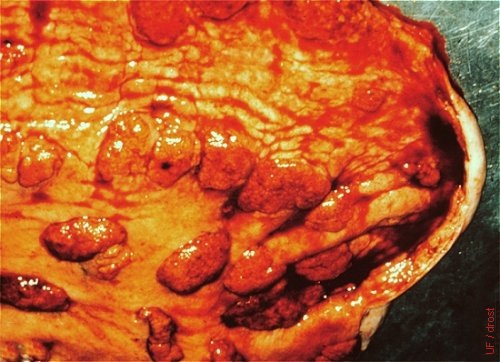
Postpartum Uterine Lumen - Day 5.
The caruncles are denuded. Varying amounts of lochia are still present.
Morrow DA (1975)
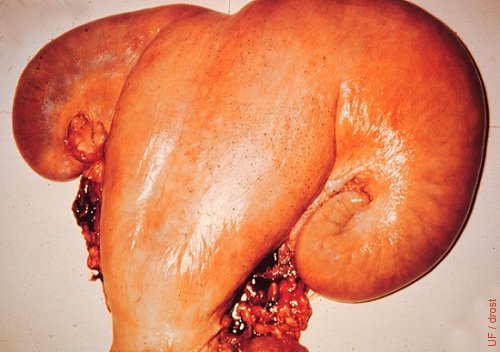
Postpartum Uterus - Day 6.
The uterus is thick walled and may contain a considerable amount of normal lochia 6 days after calving.
Morrow DA (1975)
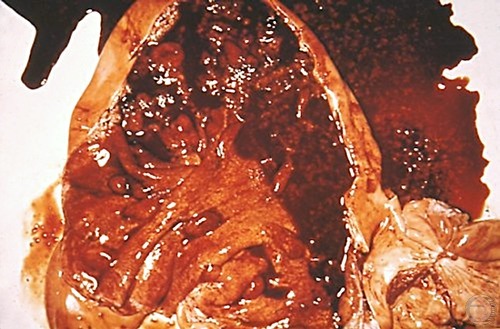
Postpartum Uterus - Day 9.
Normal involuting uterus at 9 days post partum. Normal lochia is present consisting of (old) blood, mucus, and detritus. There should be no, or minimal, odor.
Morrow DA (1975)
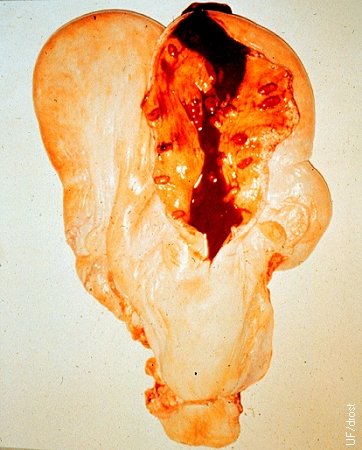
Postpartum Uterine Lumen - Day 9.
Considerable lochia remains. The caruncles have regressed in size.
Morrow DA (1975)

Postpartum Uterus - Day 11.
The uterus is thick walled. The ovaries are inactive.
Morrow DA (1975)
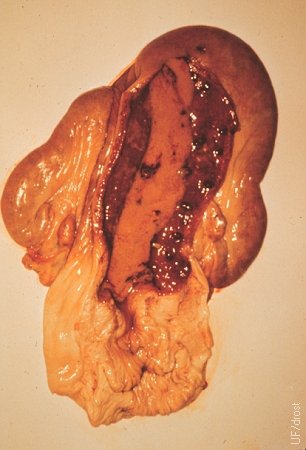
Postpartum Uterine Lumen - Day 11.
Normal postpartum uterus on Day 11. Considerable non-odorous lochia may still remain.
Morrow DA (1975)
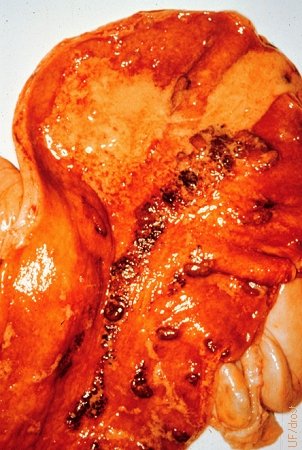
Postpartum Uterine Lumen - Day 11.
Denuded hemorrhagic caruncles and lochia are present.
Morrow DA (1975)
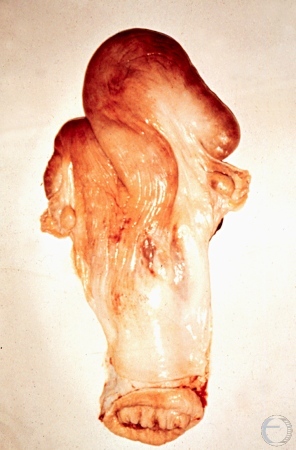
Postpartum Uterus - Day 14.
Though still somewhat heavy, the uterus is retractable into the pelvic cavity at 14 days post partum.
Morrow DA (1975)
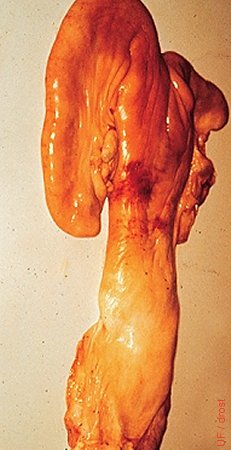
Postpartum Uterus - Day 15.
Distinct asymmetry remains. Both ovaries are inactive. Uterine tone is firm.
Morrow DA (1975)
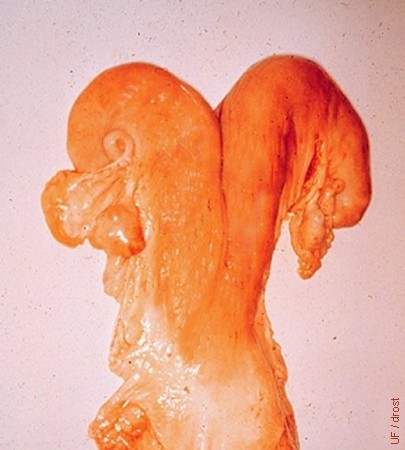
Postpartum Uterus - Day 30.
At 30 days post partum the uterus is generally 95% involuted after a spontaneous vaginal delivery. A fully developed corpus luteum is present on the left ovary.
Morrow DA (1975)

Postpartum Uterine Lumen - Day 30.
At 30 days post partum, the uterine lumen is clean. The caruncles remain prominent.
Morrow DA (1975)
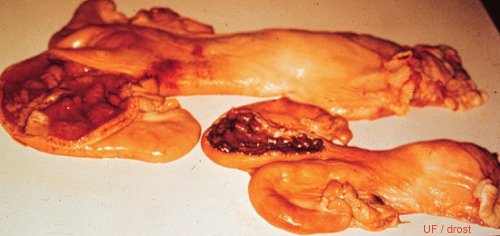
Postpartum Uterus - Day 15 vs Day 30.
The progressive reduction in size over a two-week period can be readily appreciated. The 30-day postpartum uterus was gravid in the left horn, the 15-day postpartum uterus was gravid in the right horn.
Morrow DA (1975)
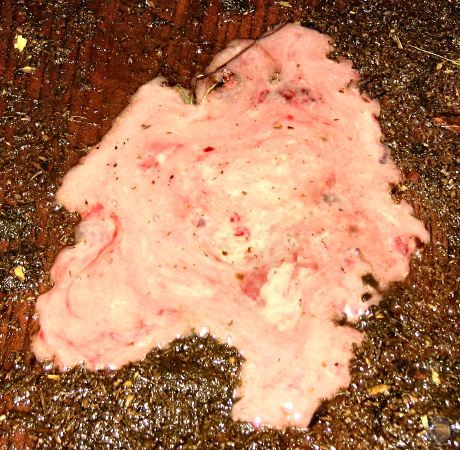
Postpartum Uterine Discharge.
The postpartum uterine discharge consisting of uterine debris, mucus and old blood, is called lochia. It is normal, as the caruncular caps slough around 9 days post partum. There should be no offensive odor associated with it, which would indicate infection.
Plahotnik A (2007)
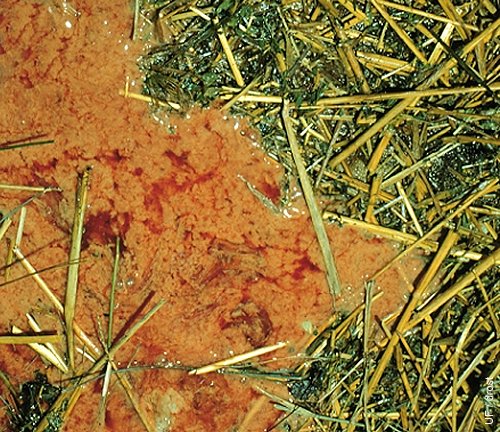
Lochia.
Lochia is a normal postpartum uterine discharge, consisting of uterine debris (caruncular caps), 7 to 10 after parturition. However, a foul odor indicates contamination and infection. Flies may also be a problem.
Drost M (1968)

Blood Tinged Mucous Discharge.
Odorless, slightly blood tinged vaginal mucus is normal during the first week post partum.
Plahotnik A (2007)
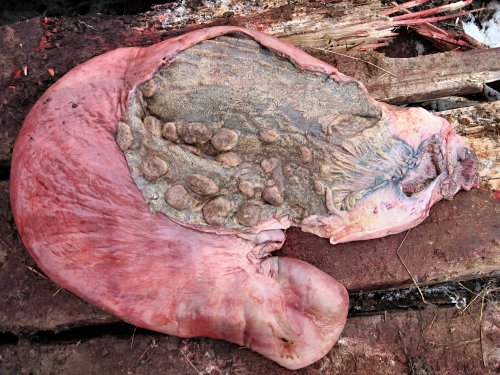
Puerperal Metritis.
Postmortem specimen from a first calf heifer that died from toxemia nine days after calving. Exposure of the endometrium shows delayed involution of the caruncles and discoloration due hydrogen sulfide production. There was a foul odor.
Plahotnik A (2007)
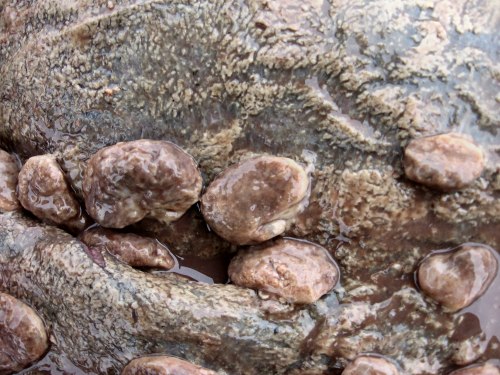
Infected Postpartum Caruncles.
Close-up of infected caruncles with delayed involution. Day 9 post partum.
Plahotnik A (2007)
